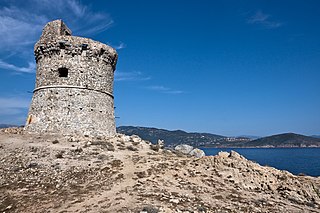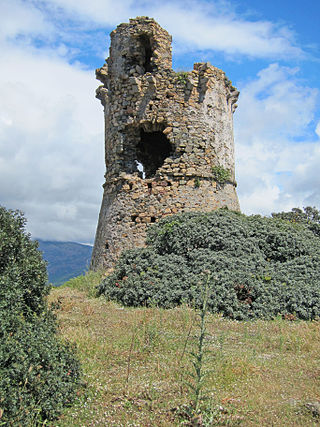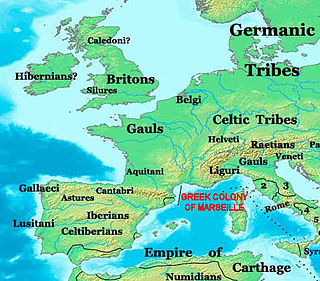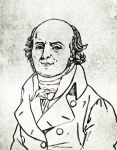
The Corsicans are a Romance Italic ethnic group. They are native to Corsica, a Mediterranean island and a territorial collectivity of France.

Sampiero Corso was a Corsican soldier, father of the Marshal of France Alphonse d'Ornano.

Cargèse is a village and commune in the Corse-du-Sud department of France on the west coast of the island of Corsica, 27 km north of Ajaccio. As of 2017, the commune had a population of 1,325.

Corsica is an island in the Mediterranean Sea and one of the 18 regions of France. It is the fourth-largest island in the Mediterranean and lies southeast of the French mainland, west of the Italian Peninsula and immediately north of the Italian island of Sardinia, the nearest land mass. A single chain of mountains makes up two-thirds of the island. As of January 2024, it had a population of 355,528.

The history of Corsica goes back to antiquity, and was known to Herodotus, who described Phoenician habitation in the 6th century BCE. Etruscans and Carthaginians expelled the Phoenicians, and remained until the Romans arrived during the Punic Wars in 237 BCE. Vandals occupied it in 430 CE, followed by the Byzantine Empire a century later.
Corsicans, coming mainly from the regions of Cap Corse and La Castagniccia in the mediterranean island of Corsica, started arriving in the first third of the 19th century and settled mainly in the coastal towns of Carúpano and Rio Caribe. Known locally as Los Corsos, Corsicans played a central role in the development of the cocoa and rum industry in Venezuela. Around the 1950s many Corsican families left Paria and settled in Caracas, and have been active in politics, commerce, medicine and the arts.

Corsica wine is wine made on the Mediterranean island of Corsica. Located 90 km west of Italy, 170 km southeast of France and 11 km north of the island of Sardinia, the island is a territorial collectivity of France, but many of the region's winemaking traditions and its grape varieties are Italian in origin. The region's viticultural history can be traced to the island's settlement by Phoceans traders in 570 BC in what is now the commune of Aléria. In the 18th century, the island came under the control of France. Following the independence of Algeria from French rule, many Algerian Pieds-Noirs immigrated to Corsica and began planting vineyards. Between 1960 and 1976 the vineyard area in Corsica increased fourfold. In 1968, Patrimonio was established as Corsica's first Appellation d'origine contrôlée (AOC). Today, Corsica has nine AOC regions including the island-wide designation Vin de Corse AOC. The majority of the wine exported from Corsica falls under the Vin de pays designation Vin de Pays de l'Île de Beauté. The three leading grape varieties of the region are Nielluccio (Sangiovese), known as the spice wine of France, Sciacarello and Vermentino.

Diplomatic relations between Algeria and Greece date back for more than 2000 years. Diplomatic relations have been solid since Algeria's first years of independence. Greece maintains an embassy in Algiers, and Algeria is represented in Greece by its embassy in Athens. Trade between Greece and Algeria is increasing, with imports of natural gas from Algeria an important factor. There have been problems with illegal immigration from Algeria to Greece in recent years, and with Algerian trafficking of Sub-Saharan Africans seeking to enter the European Union.

The Tower of Omigna is a ruined Genoese tower located in the commune of Cargèse on the French island of Corsica.

The Tower of Orchinu is a ruined Genoese tower located in the commune of Cargèse on the Corsica. It sits at an elevation of 172 metres (564 ft) on the Punta d'Orchinu headland.

The Tour de Cargèse is a ruined Genoese tower located in the commune of Cargèse on the French island of Corsica. It sits on the highest point of the Puntiglione headland at an elevation of 157 metres (515 ft) above the sea. Only the base of the tower has survived.

The Genoese towers in Corsica are a series of coastal defences constructed by the Republic of Genoa between 1530 and 1620 to stem the attacks by Barbary pirates.

The Greeks in pre-Roman Gaul have a significant history of settlement, trade, cultural influence, and armed conflict in the Celtic territory of Gaul, starting from the 6th century BC during the Greek Archaic period. Following the founding of the major trading post of Massalia in 600 BC by the Phocaeans at present day Marseille, Massalians had a complex history of interaction with peoples of the region. Large Greek colonies also existed west of the Rhône, particularly at Agde and Béziers, the latter of which both predates, and was larger than, the Marseille colony.

The Invasion of Corsica of 1553 occurred when French, Ottoman, and Corsican exile forces combined to capture the island of Corsica from the Republic of Genoa.
The Corsican mafia is a set of criminal groups originating from Corsica. The mafia is closely tied to both the French underworld and the Italian Mafia. The Corsican mafia is an influential organized crime structure operating in France, Russia, and many African and Latin American countries.
Sidi Merouane is a town and commune in Mila Province, Algeria. At the 1998 census it had a population of 20,018.
The 2017 Corsican territorial elections were held on 3 and 10 December 2017 to elect 63 members of the Corsican Assembly, who in turn determined the composition of the Executive Council of Corsica. The election was held only two years after the 2015 territorial elections, and were called as a result of the planned creation of a single collectivity within Corsica resulting from the mergers of two departments, and the existing territorial collectivity of Corsica.

Demetrio Stefanopoli was a Corsican notable and military officer in French service. A member of the Greek community of Corsica, in 1782 he received letters patent from Louis XVI recognizing him as the descendant and heir of David Komnenos, the last Emperor of Trebizond, after which he was known in French as Démétrius Stephanopoli Comnène.

The Gulf of Porto is a gulf of the Mediterranean Sea located on the western façade of the island of Corsica, France, well known for its dramatic coloration and rugged cliffs. The gulf is located within the department of Corse-du-Sud. The gulf and surrounding coast is part of the Regional Natural Park of Corsica. In 1983 the gulf was designated as a UNESCO World Heritage Site, encompassing the Calanques de Piana, Gulf of Girolata, and Scandola Nature Reserve, due to its outstanding scenery, rich avian and marine life, and maquis shrubland.
Anti-Corsican sentiment or Anti-Corsianism is hostility, rejection, discrimination against and/or hatred towards Corsica, Corsican culture or the Corsican ethnic group. In the 21st century, some denounce the use of the term as a victimization phenomenon.




















